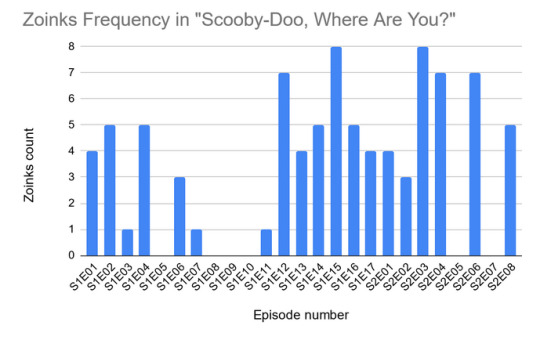#Qualitative
Explore tagged Tumblr posts
Text

This is probably a long shot, but I'm taking a quantitative methods seminar, and I'm struggling to understand which tests I should run (I tend to be a more rhetorical and qual researcher...). Any SPSS heads out there who want to help me out with this rough draft flow chart I'm trying to make?
#grad school#gradblr#master study#studyblr#studyspo#zotero#quantitative#qualitative#spss#spss assignment help#mathblr
7 notes
·
View notes
Text

Learn how to choose the right research methodology that is relevant for your study which gives credibility to your research. Develop appropriate sampling techniques. Register Now: https://www.thesiswritingsupport.com/research-methodology/
#ResearchMethodology#research#researchers#philosophy#methodology#qualitative#quantativetechniques#researchdesign#datagathering#primaryvssecondry#descriptive#experimental#thesiswriting#Thesisediting#statistics#StatisticalAnalysis#rehobothacademics#copyediting#proofreading#workshops2024#workshopalert#research phd thesis scholars
2 notes
·
View notes
Text
Like, Wow! The Results (Study)
Followup post to "The History of Zoinks." Includes methods, results, discussion. Page break after the first section.
Methods
This exploratory study will examine how accurately the catchphrases in Scooby-Doo reflect the language of the time. Based on their historical usage, we hypothesize that “jinkies” will be the most commonly occurring phrase, followed by “jeepers,” then “zoinks.”
We sampled the first 25 episodes of Scooby-Doo, Where Are You! These episodes aired from September 13, 1969, to October 31, 1970 and make up the first two seasons of the show. The third and final season would not air until 1978 and had different writers, so it was omitted. Qualitative analysis was conducted in NVivo from episode transcripts obtained online.
Results
The most used catchphrase was “zoinks,” at 87 occurrences across 25 episodes, averaging 3.48 “zoinks” per episode. Some episodes had no “zoinks”, with a notable 3-episode consecutive gap mid-season 1. Overall, “zoinks” usage trended positive; season 1 averaged 3.12 “zoinks” per episode while season 2 averaged 4.25. “Jeepers” was used once and there were no “jinkies”.
In context, Shaggy used “zoinks” as either an expression of shock on its own or paired with a frightful observation (e.g., “Zoinks! It’s the snow ghost!”). Once, in a witch’s hut, it was used as an adjective: “What zoinky labels… ear of a newt?” The first “jeepers” came from Velma, used more as surprise than fear: “Jeepers! Someone’s going into that old mansion” (season 1, episode 6, “What the Hex Going On?”).

Figure 1. Zoinks Frequency in "Scooby-Doo, Where Are You?"
Discussion
Results not only contradicted the hypothesis, but all expectations founded by the literature. Despite their cultural relevance, we observed only one count of “jeepers” (not counting the season 2 episode 4 title, “Jeepers, It’s the Creeper”) and no “jinkies." The slow climb of “jeepers” may be attributed to the aforementioned “cultural time capsule” concept. It is an unwritten law of media that it must wait to capture popular culture until a few years too late. Usage of “jeepers” skyrocketed between DeBeck’s comic in 1928 and Donahue’s musical rendition in 1939, peaking in 1946 (Harper, “Etymology of jeepers”). However, despite Scooby-Doo’s monumental ratings, “jeepers” did not jump again until the movie Jeepers Creepers came out in 2001. Although “jinkies” did not appear in these two seasons, we know it would experience a great jump in The New Scooby-Doo Movies whenever Velma loses her glasses, growing to become her exclusive catchphrase in A Pup Named Scooby-Doo when she cooks up a clue. In the sampled episodes, Velma seemed to be struggling to find a catchphrase that stuck, floating between “gosh,” “golly,” and similar expressions. Why it took until three years into Scooby’s run for “jinkies” to first appear is uncertain, as both it and “zoinks” share similar histories as interjections of fright (and flight). One potential explanation could be the face value of the characters on first airing. Shaggy boasted the voice of radio celebrity Casey Kasem. The writers seemed to enjoy letting him show off his odd audio skills, as in Shaggy’s “ventriloquism act” in the episode “What a Night for a Knight” and every variation of the “disguise as barbers to fool the monster into getting a haircut” scene that warranted a funny voice. Kasem was the first to say “zoinks” (and “zoink,” in one instance), but certainly not the last. In these first two seasons, Shaggy had a clear monopoly on catchphrases; the first “jeepers” even came from him. The catchphrases in Scooby-Doo, Where Are You? do not reflect the vernacular of the time. Rather, they reflect what pumps the lifeblood of Hanna-Barbera cartoons: money (i.e., ratings). To keep the audience hooked, the writers had to put out only the best voicework. Casey Kasem as Shaggy was a bridge between audiences of children enjoying funny voices and adults enjoying a familiar radio personality (and modern folks enjoying a 60’s caricature). He and Scooby embody the spirit of the franchise strongly enough that they have survived through every series that tried to cut out other members of the gang (Scooby-Doo and Scrappy-Doo, The 13 Ghosts of Scooby-Doo) or otherwise split them up (Shaggy & Scooby-Doo Get a Clue!). Despite “zoinks” having no direct predecessors in popular culture, Shaggy quickly spread it with his image as irreplaceable icons of the series across 250 episodes and 45 films. Like with Barney Google’s “heebie-jeebies” and Fred Flintstone’s “Yabba-dabba-doo,” it’s not about the linguistic sense of the catchphrase. It’s about the character who delivers it.
*Excluding Velma (2023) on HBO Max, which featured all of the gang but Scooby-Doo. Shaggy endures.
References
Harper, Douglas. “Etymology of jeepers.” Online Etymology Dictionary, 28 Sept. 2017, www.etymonline.com/word/jeepers.
1 note
·
View note
Text
5 Minutes statistics for clinical research - Quantitative and Qualitative Data
What kind of variable are we dealing with? Is it measurable or countable and therefore of quantitative nature? Or is the data given … source
0 notes
Video
Contact Photography by Russell Moreton Via Flickr: russellmoreton.tumblr.com/archive Russell Moreton Winchester Discovery Centre 09:00am Wednesday 02 Oct 2013 to Thursday 31 Oct 2013 Russell Moreton is a visual fine artist working with alternative and historic photographic processes. He uses pinhole cameras for inquiry into architectural space, these initial perspectives are further collaged and rendered through the Cyanotype process. He is currently working in the library spaces, and aims to produce a series of working ideas/blueprints for display. Cost: Free Venue: Winchester Discovery Centre Telephone: 01962873603
#Winchester Discovery Centre#Wallspace Gallery#Russell Moreton#pinhole#photography#alternative photographic processes#spatial practices#cyanotype#text#site writing#surface#architectural#interior#time based#qualitative#research#strategies#subjective#site based#inquiry#fine art#practice#theory#spatiality#liminal light#architectural photography#spatial intelligence#history in space#built environment#human capability
1 note
·
View note
Text
Trendline zigzag in qualitative channel - indicator MetaTrader 5
This indicator is as an evolution of the classic Donchian channel. Pivots are identified using a zigzag structure and graphical markers, with the pivots derived entirely from the behaviour of the channel. A pivot is triggered when the channel flattens, forming a connector point for the next zigzag leg. To avoid weak or insignificant pivots, a depth parameter is used to confirm the channel’s…
0 notes
Text
Thirty Minute Methods at TDTU - playlist
This is the playlist link for 30 Minute Methods 30 Minute Methods is a series of short talks by sociologists, anthropologists and film/media researchers where the debate about methods—how to do is less important than wrangling with the issues that come up when you do—and with a strong bias against market research or anything quantitative that seeks the questions to fit the answers worked out in…

View On WordPress
#anthropology#cultural studies#debate#Media studies#method#methods#qualitative#sociology#speakers#tdtu
2 notes
·
View notes
Link
0 notes
Text
A qualitative picture of the pattern of predicted formaldehyde release to the indoor air of a newly constructed building is shown in Fig. 7.2.

"Environmental Chemistry: A Global Perspective", 4e - Gary W. VanLoon & Stephen J. Duffy
#book quotes#environmental chemistry#nonfiction#textbook#qualitative#prediction#formaldehyde#new construction#polymer#graph
0 notes
Text
The Pickup Truck Diaries: “The Second Most Prolific Poet In History” & Goal Setting.
Let’s start this edition of The Pickup Truck Diaries with a rhetorical question: “How does one go about achieving the goals they’ve set for themselves?” I’ll give you a few minutes to pause and think about that. Most folks have already started churning their brains into realistic “brass tacks” solutions. However, the question I asked just now is also sort of the wrong question. Not that I…
#achieve#ADHD#artist#author#careers#diaries#disability#Executive Function#goal#goals#goalsetting#independent#indie#life goals#mental health#mental illness#pickup#pickup truck diaries#planning#poem#poems#poet#poetry#progress#prolific#prose#qualitative#quantitative#queer#record
0 notes
Text
Post-Pandemic Ethnography: Market Research In A Changed World

Explore the evolution of ethnographic research in the post-pandemic era. Discover how virtual and hybrid methods have adapted to the new normal and delve into success stories of ethnographic research conducted during and after COVID-19. Uncover valuable insights into market research in a transformed world.
Link : https://maction.com/post-pandemic-ethnography-market-research-in-a-changed-world/
#PostPandemic#Ethnography#Market#Research#Virtual#Hybrid#Covid19#Impact#Consumer#Behavior#Qualitative#Remote#Online#Ethnographic#Methods#Insights#Trends#Digital#Transformation#New Normal#Psychology
0 notes
Text
Qualitative Research: Follow and expert (Part 4)
Qualitative Research: Follow an expert (Part 4) @trishgreenhalgh #nurse #nurseeducator #nursingPHD #qualitativeresearch
Going straight to the source of expertise in all kinds of research, the work by Prof Trisha Greenhalgh has been essential to my own learning. The experiences of research participants allows for more in-depth understanding and identifying what matters most to the participant (patients, families and carers, nurses, multidisciplinary team). Resources Greenhalgh, T., & Taylor, R. (1997). How to…

View On WordPress
0 notes
Text
20 minute NVivo tutorial: learn how to code qualitative data
This is NVivo tutorial for beginners, where I show you all you need to know to code your qualitative data for thematic analysis. source
0 notes
Text
Initial Research Design for Clinicians with Dr. Stephen May | PT Pro Talk Podcast
youtube
Join them on PT Pro Talk Podcast as they delve into the world of research design with Dr. Stephen May. Dr. May shares valuable insights for clinicians, highlighting the importance of systematic reviews in assessing interventions and assessment processes. Discover how systematic reviews summarize literature, consider the quality of evidence, and provide crucial insights for clinical practice.
0 notes
Quote
Those whose job it is to run the state or corporation assume that what is illegible to the system must be insignificant, so they end up destroying much of what makes life rich and cherishable.
(26) Ten Useful Concepts - by Ian Leslie - The Ruffian
Nice idea about the need to make a state or comapny “legible” so that it can be managed. Relates to something I read earlier that “data” is not just numbers. Conversations can be data too. Legibility makes this data harder to share and less quick to understand, so it gets ignored or turned into numbers (NPS score, for example)
0 notes
